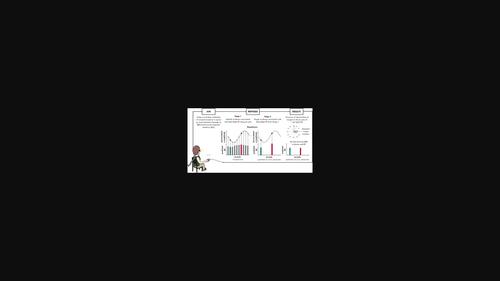当前位置:
X-MOL 学术
›
Eur. J. Neurosci.
›
论文详情
Our official English website, www.x-mol.net, welcomes your
feedback! (Note: you will need to create a separate account there.)
Can the occipital alpha-phase speed up visual detection through a real-time EEG-based brain–computer interface (BCI)?
European Journal of Neuroscience ( IF 2.7 ) Pub Date : 2020-08-03 , DOI: 10.1111/ejn.14931 Irene Vigué-Guix 1 , Luis Morís Fernández 1, 2 , Mireia Torralba Cuello 1 , Manuela Ruzzoli 3 , Salvador Soto-Faraco 1, 4
European Journal of Neuroscience ( IF 2.7 ) Pub Date : 2020-08-03 , DOI: 10.1111/ejn.14931 Irene Vigué-Guix 1 , Luis Morís Fernández 1, 2 , Mireia Torralba Cuello 1 , Manuela Ruzzoli 3 , Salvador Soto-Faraco 1, 4
Affiliation

|
Electrical brain oscillations reflect fluctuations in neural excitability. Fluctuations in the alpha band (α, 8–12 Hz) in the occipito-parietal cortex are thought to regulate sensory responses, leading to cyclic variations in visual perception. Inspired by this theory, some past and recent studies have addressed the relationship between α-phase from extra-cranial EEG and behavioural responses to visual stimuli in humans. The latest studies have used offline approaches to confirm α-gated cyclic patterns. However, a particularly relevant implication is the possibility to use this principle online, whereby stimuli are time-locked to specific α-phases leading to predictable outcomes in performance. Here, we aimed at providing a proof of concept for such real-time neurotechnology. Participants performed a speeded response task to visual targets that were presented upon a real-time estimation of the α-phase via an EEG closed-loop brain–computer interface (BCI). According to the theory, we predicted a modulation of reaction times (RTs) along the α-cycle. Our BCI system achieved reliable trial-to-trial phase locking of stimuli to the phase of individual occipito-parietal α-oscillations. Yet, the behavioural results did not support a consistent relation between RTs and the phase of the α-cycle neither at group nor at single participant levels. We must conclude that although the α-phase might play a role in perceptual decisions from a theoretical perspective, its impact on EEG-based BCI application appears negligible.
中文翻译:

枕骨 α 相能否通过基于实时 EEG 的脑机接口 (BCI) 加速视觉检测?
脑电振荡反映了神经兴奋性的波动。枕顶叶皮层 α 波段(α,8-12 Hz)的波动被认为可以调节感觉反应,导致视觉感知的周期性变化。受这一理论的启发,过去和最近的一些研究已经解决了颅外脑电图的 α 期与人类对视觉刺激的行为反应之间的关系。最新研究使用离线方法来确认 α 门控循环模式。然而,一个特别相关的含义是可以在线使用这个原则,从而刺激被时间锁定到特定的α阶段,从而导致可预测的性能结果。在这里,我们旨在为这种实时神经技术提供概念证明。参与者对通过脑电图闭环脑机接口 (BCI) 实时估计 α 阶段呈现的视觉目标执行了快速响应任务。根据该理论,我们预测了沿 α 循环的反应时间 (RT) 的调节。我们的 BCI 系统实现了对单个枕顶叶 α 振荡相位的刺激的可靠试验锁相。然而,行为结果不支持 RT 与 α 循环阶段之间的一致关系,无论是在组还是在单个参与者水平。
更新日期:2020-08-03
中文翻译:

枕骨 α 相能否通过基于实时 EEG 的脑机接口 (BCI) 加速视觉检测?
脑电振荡反映了神经兴奋性的波动。枕顶叶皮层 α 波段(α,8-12 Hz)的波动被认为可以调节感觉反应,导致视觉感知的周期性变化。受这一理论的启发,过去和最近的一些研究已经解决了颅外脑电图的 α 期与人类对视觉刺激的行为反应之间的关系。最新研究使用离线方法来确认 α 门控循环模式。然而,一个特别相关的含义是可以在线使用这个原则,从而刺激被时间锁定到特定的α阶段,从而导致可预测的性能结果。在这里,我们旨在为这种实时神经技术提供概念证明。参与者对通过脑电图闭环脑机接口 (BCI) 实时估计 α 阶段呈现的视觉目标执行了快速响应任务。根据该理论,我们预测了沿 α 循环的反应时间 (RT) 的调节。我们的 BCI 系统实现了对单个枕顶叶 α 振荡相位的刺激的可靠试验锁相。然而,行为结果不支持 RT 与 α 循环阶段之间的一致关系,无论是在组还是在单个参与者水平。











































 京公网安备 11010802027423号
京公网安备 11010802027423号